Abstract
Urine calcium excretion in healthy children was 2·38±0·66 (SD; no. = 52) mg/kg per 24 hr and urinary magnesium excretion was 2·82±0·79 (SD; no. = 23). The 24-hour urine calcium excretion could be predicted with reasonable confidence from the calcium/creatinine concentration ratio of the second urine specimen passed in the morning. In this specimen the urine calcium/creatinine concentration ratio was 0·14±0·06 (SD; no. = 60) mg/mg and the magnesium/creatinine concentration ratio was 0·21±0·10 (SD; no. = 29) mg/mg.
The upper limit of the urine calcium excretion is taken to be 4 mg/kg per 24 hr and that of the calcium/creatinine concentration ratio in the second morning urine is 0·25 mg/mg. After a milk load of 700 ml/1·73 m2 the urinary calcium/creatinine concentration ratio rose in the first two hours, but in no sample exceeded 0·25 mg/mg.
Full text
PDF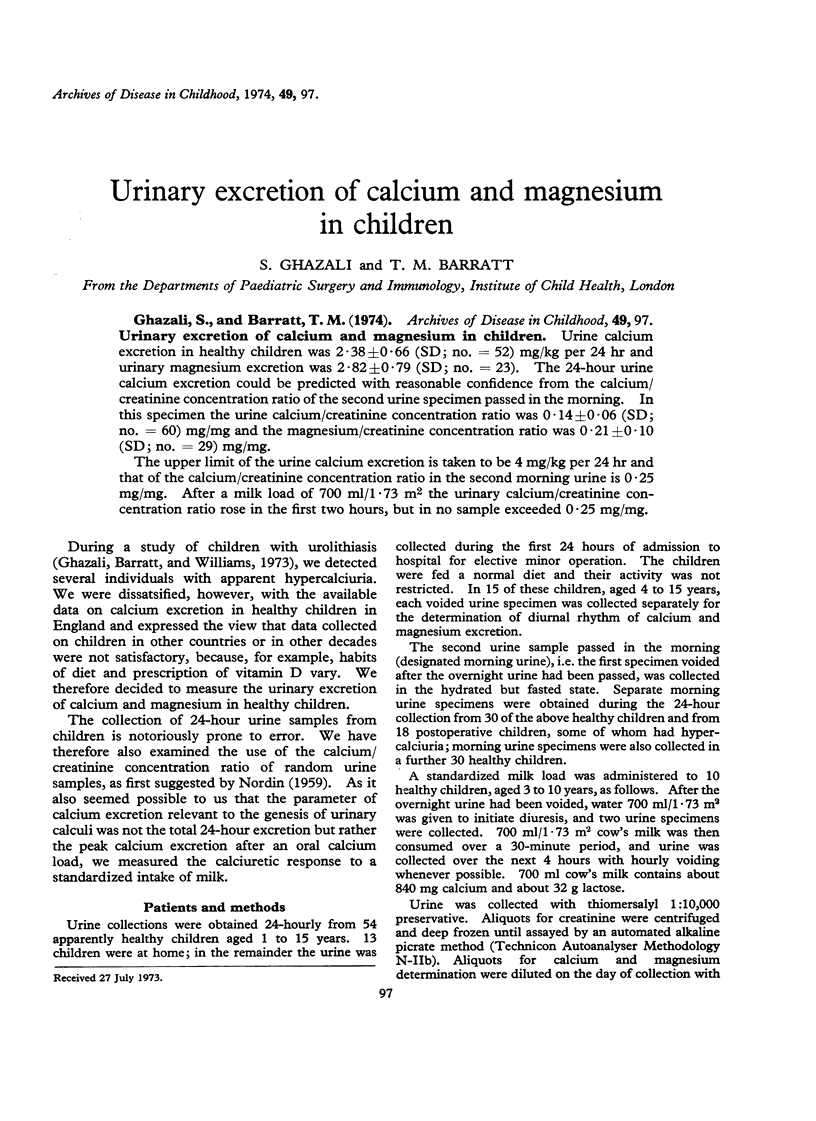
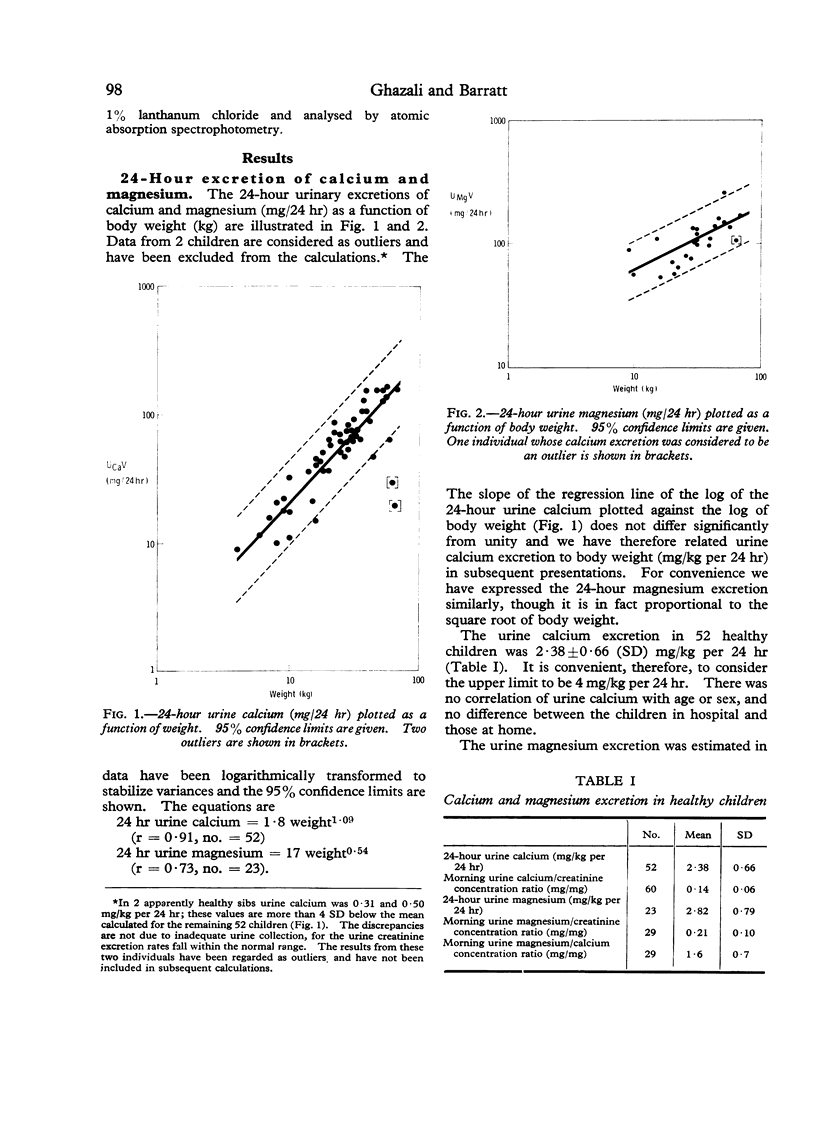
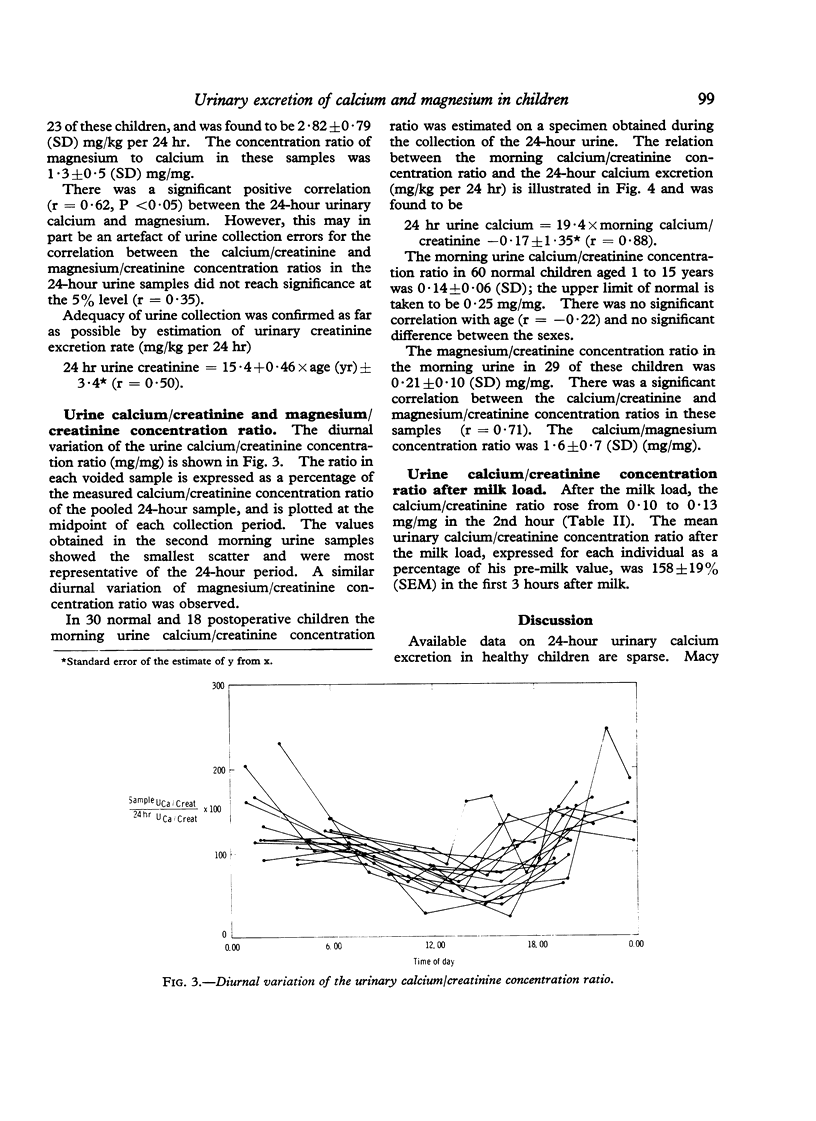
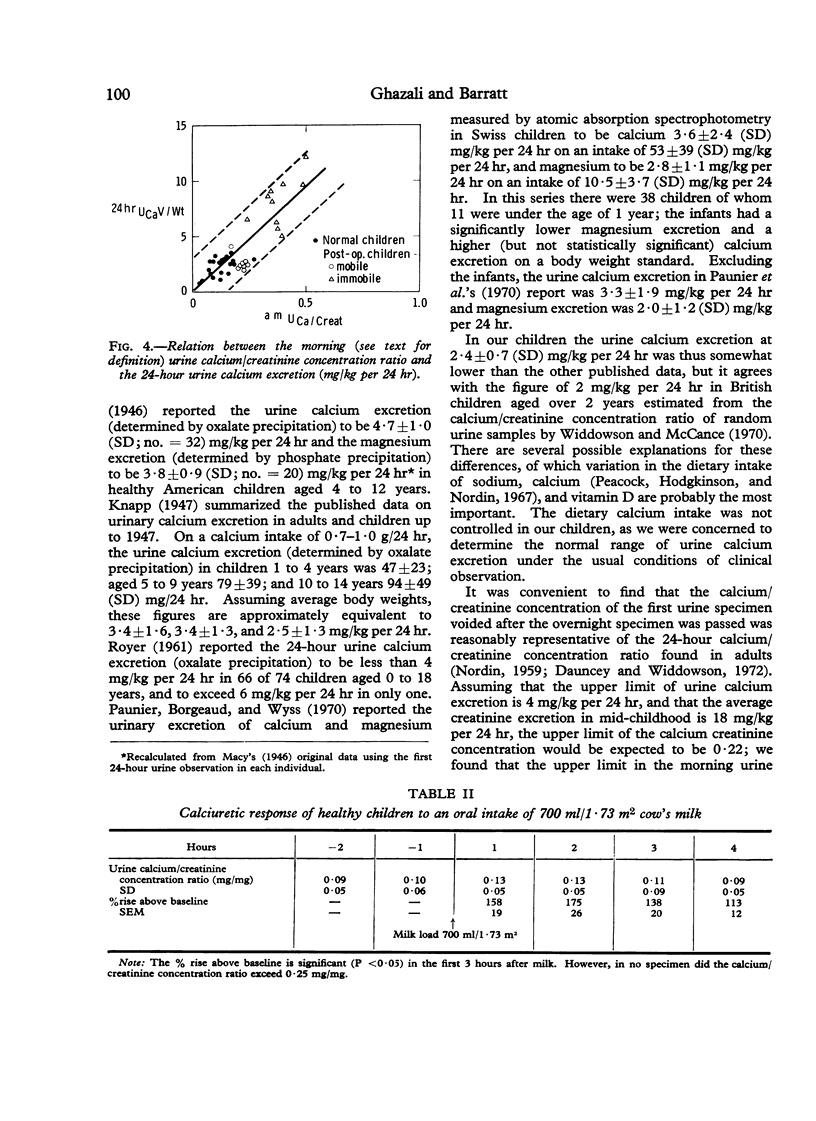
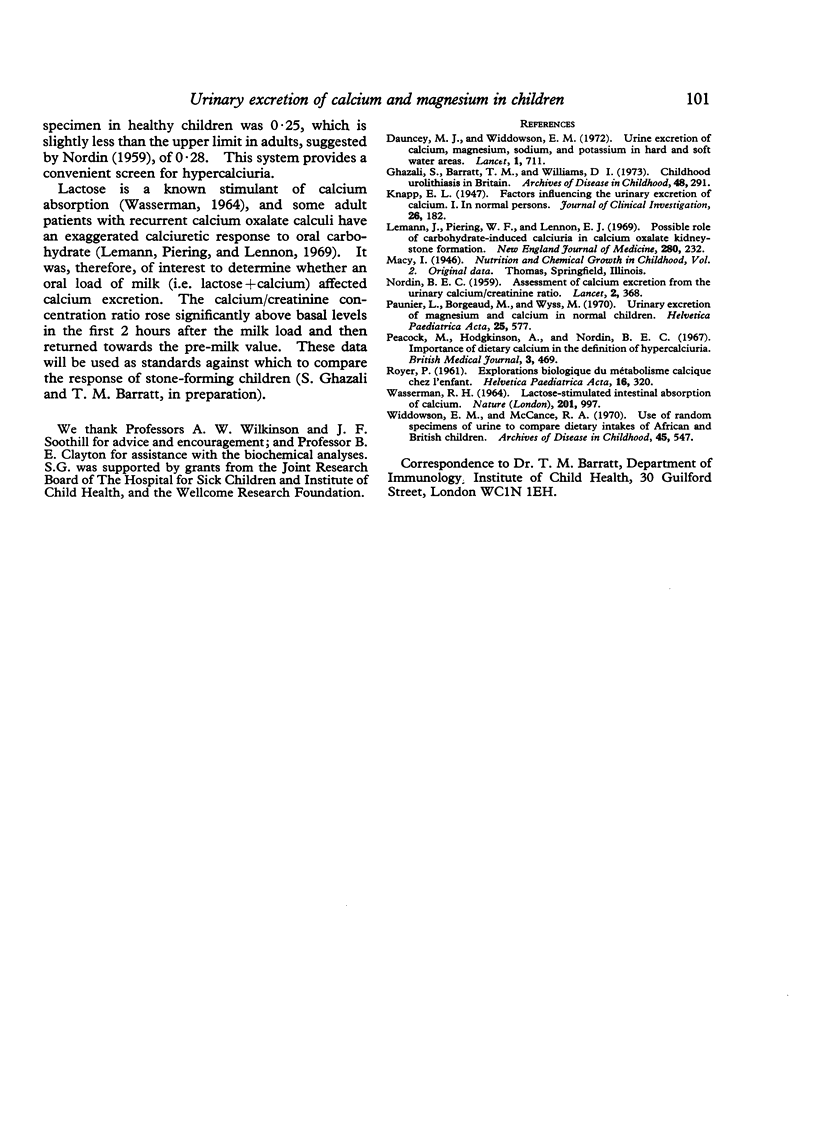
Selected References
These references are in PubMed. This may not be the complete list of references from this article.
- Dauncey M. J., Widdowson E. M. Urinary excretion of calcium, magnesium, sodium, and potassium in hard and soft water areas. Lancet. 1972 Apr 1;1(7753):711–714. doi: 10.1016/s0140-6736(72)90230-9. [DOI] [PubMed] [Google Scholar]
- Ghazali S., Barratt T. M., Williams D. I. Childhood urolithiasis in Britain. Arch Dis Child. 1973 Apr;48(4):291–295. doi: 10.1136/adc.48.4.291. [DOI] [PMC free article] [PubMed] [Google Scholar]
- Knapp E. L. FACTORS INFLUENCING THE URINARY EXCRETION OF CALCIUM. I. IN NORMAL PERSONS. J Clin Invest. 1947 Mar;26(2):182–202. doi: 10.1172/JCI101797. [DOI] [PMC free article] [PubMed] [Google Scholar]
- Lemann J., Jr, Piering W. F., Lennon E. J. Possible role of carbohydrate-induced calciuria in calcium oxalate kidney-stone formation. N Engl J Med. 1969 Jan 30;280(5):232–237. doi: 10.1056/NEJM196901302800502. [DOI] [PubMed] [Google Scholar]
- NORDIN B. E. Assessment of calcium excretion from the urinary calcium/creatinine ratio. Lancet. 1959 Sep 19;2(7099):368–371. doi: 10.1016/s0140-6736(59)91635-6. [DOI] [PubMed] [Google Scholar]
- Paunier L., Borgeaud M., Wyss M. Urinary excretion of magnesium and calcium in normal children. Helv Paediatr Acta. 1970 Dec;25(6):577–584. [PubMed] [Google Scholar]
- Peacock M., Hodgkinson A., Nordin B. E. Importance of dietary calcium in the definition of hypercalciuria. Br Med J. 1967 Aug 19;3(5563):469–471. doi: 10.1136/bmj.3.5563.469. [DOI] [PMC free article] [PubMed] [Google Scholar]
- ROYER P. [Biological explorations of calcium metabolism in infants]. Helv Paediatr Acta. 1961 Sep;16:320–346. [PubMed] [Google Scholar]
- WASSERMAN R. H. LACTOSE-STIMULATED INTESTINAL ABSORPTION OF CALCIUM: A THEORY. Nature. 1964 Mar 7;201:997–999. doi: 10.1038/201997a0. [DOI] [PubMed] [Google Scholar]
- Widdowson E. M., McCance R. A. Use of random specimens of urine to compare dietary intakes of African and British children. Arch Dis Child. 1970 Aug;45(242):547–552. doi: 10.1136/adc.45.242.547. [DOI] [PMC free article] [PubMed] [Google Scholar]


